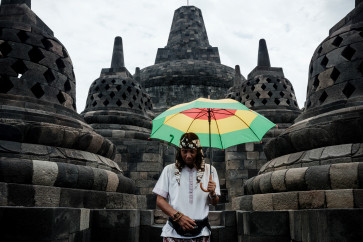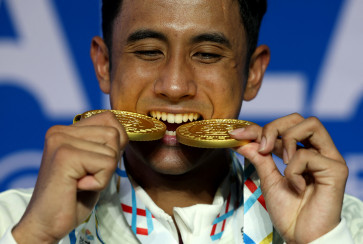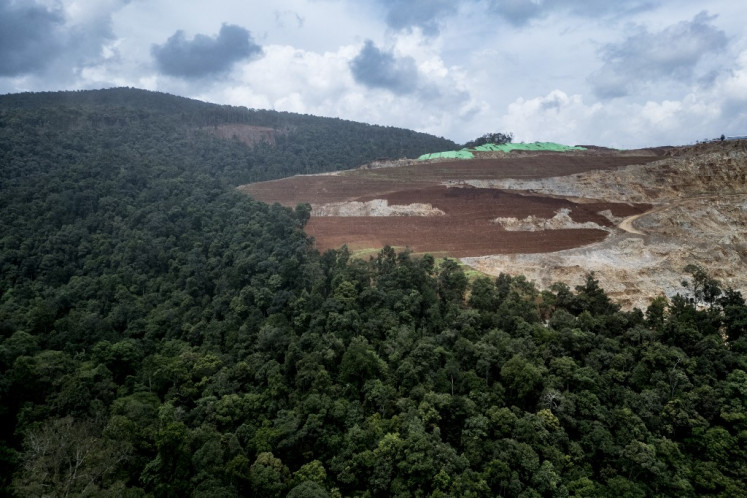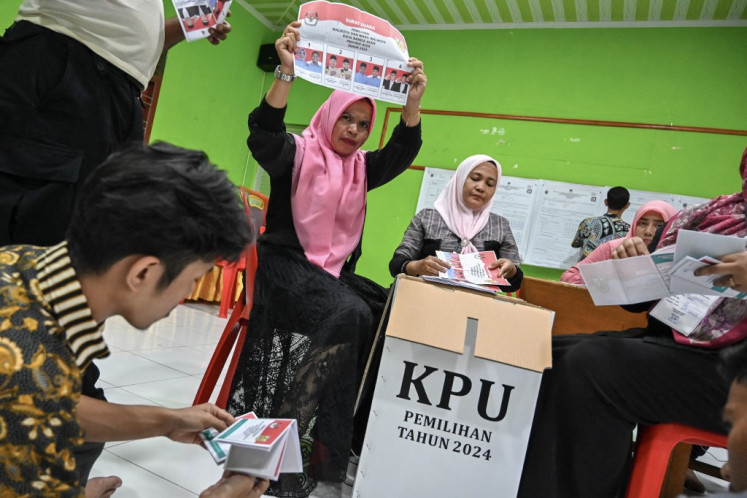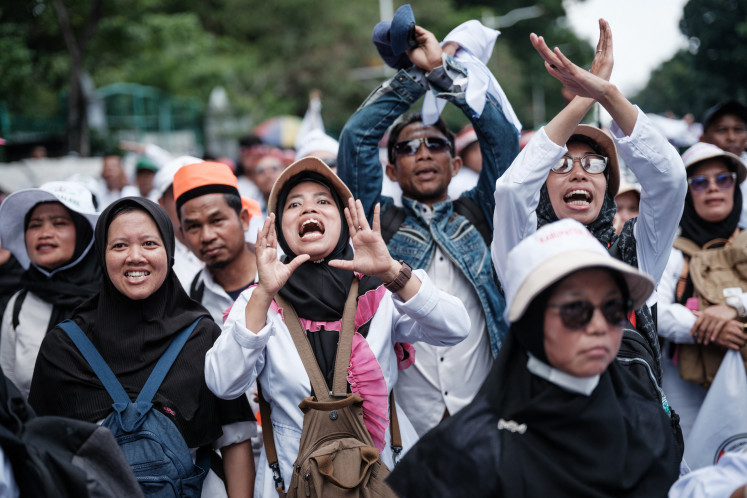Popular Reads
Top Results
Can't find what you're looking for?
View all search resultsPopular Reads
Top Results
Can't find what you're looking for?
View all search resultsNew study suggests no Indonesians are truly 'pribumi'
For generations, Indonesians have discussed the dichotomy between pribumi, or native Indonesians, and “non-pribumi”, which historically has been used to distinguish those whose ancestral roots originate within the archipelago from those of “foreign” descent
Change text size
Gift Premium Articles
to Anyone
F
or generations, Indonesians have discussed the dichotomy between pribumi, or native Indonesians, and “non-pribumi”, which historically has been used to distinguish those whose ancestral roots originate within the
archipelago from those of “foreign” descent.
But in a culturally diverse country with hundreds of ethnicities and languages, questions arise every time the term pribumi is used — including in political campaigns. Who are native Indonesians exactly?
Science, however, suggests that no Indonesians are truly native as newly released research on genealogy mapping has found that Indonesian people have mixed ancestral roots from different geographical origins in their DNAs.
The study, conducted in collaboration with history magazine Historia.id and the Education and Culture Ministry from July to September, took DNA samples from 16 respondents from across the country for a series of tests.
Among the respondents were public figures such as television journalist Najwa Shihab, the lead vocalist of rock band Noah, Nazril “Ariel” Irham, and film director Riri Riza, as well as politicians, including ruling Indonesian Democratic Party of Struggle (PDI-P) secretary-general Hasto Kristiyanto.
According to the study, all of the respondents had at least two gene traces from different ethnic groups from around the world.
Najwa — who many regard as of purely Arab descent — for example, has 10 DNA fragments from different ethnic origins. The Middle Eastern gene in her DNA only comprised 3.48 percent, while her dominating genes were made up of North African with 26.81 percent and South Asian with 48.54 percent.
Riri, meanwhile, has ancestors from at least four different ethnicities, namely from the Asian dispersed ethnic group (Asian-American), Middle Eastern and East Asian, as well as South Asian, the last of which made up 46.24 percent of his genes.
“The genetics of Indonesian people are a mix between different groups of humans.”
Herawati Supolo Sudoyo, deputy for fundamental research at the Eijkman Institute of Molecular Biology, explained that Indonesians have mixed genetic groupings thanks to the waves of Homo sapiens migration to Nusantara, the old Javanese term for Southeast Asia, around 50,000 years ago.
“Around 100,000 to 150,000 years ago, Homo sapiens first embarked on a long journey to travel the world. Throughout this journey, their bodies changed to adapt to the conditions in the places they traveled to. This is what caused our appearances to look diverse,” Herawati said.
She also said that the first group of people who stepped onto Nusantara, part of which is now known as Indonesia, were from Africa and arrived in the region through the southern part of the ocean.
“Our islands are in the sea, and close to the land as well. When they first arrived […] Borneo, Sumatra and Java were still connected as one landmass, so it was easier for them to travel from one area to another back then,” Herawati said.
With her colleagues in the Eijkman Institute, Herawati has also conducted research to trace the ancestors of Indonesians based on genetics, in which they collected and analyzed about 6,000 samples of DNA from across the country.
In her article published in The Conversation in October 2017, Herawati said they tested the chromosome Y — DNA inherited from fathers — in almost 3,000 of the samples as well as the mitochondria, which is inherited from mothers, of around 3,700 people from 35 ethnic groups.
Based on the tests on mitochondrial DNA, for instance, they found in the western part of Indonesia genetic traces of people with common ancestors who were “mostly speakers of Austronesia languages, spoken in Southeast Asia, Madagascar and Pacific Islands.”
“The genetics of Indonesian people are a mix between different groups of humans,” Herawati wrote in the article, adding that science thus found that “all Indonesians are migrants.”
Historia.id editor-in-chief Bonnie Triawan said that the newly published study on the genealogy mapping therefore showed that perpetuating the dichotomy between pribumi and non-pribumi was meaningless as the ancestors of today’s Indonesians “come from various ethnic and racial backgrounds."
The term pribumi was originally coined as part of a three-tiered racial classification during the Dutch colonial era, which placed native Indonesians below European and “foreign oriental” races, such as ethnic Chinese, Arabs and Indians.
It was, however, used to spread hatred against Chinese-Indonesians during the bloody May 1998 riots, which led to dozens of deaths and disappearances. Since that year, the use of pribumi by government officials has been banned.
Following the divisive Jakarta gubernatorial election in 2017, Jakarta Governor Anies Baswedan used the term pribumi during his inauguration speech, for which he was criticized for perpetuating racial discrimination.
Bonnie noted that ethnic and racial backgrounds were often politicized by those running for public office as some voters tend to choose their candidates based on identity.
“Hopefully, people will now be more tolerant and understanding toward each other’s differences to maintain the nation’s unity,” he added.
The DNA mapping results are available for public viewing at the Asal Usul Orang Indonesia (The Origins of Indonesians) exhibition at the National Museum, Jakarta, which will run from Oct. 15 to Nov. 10.



